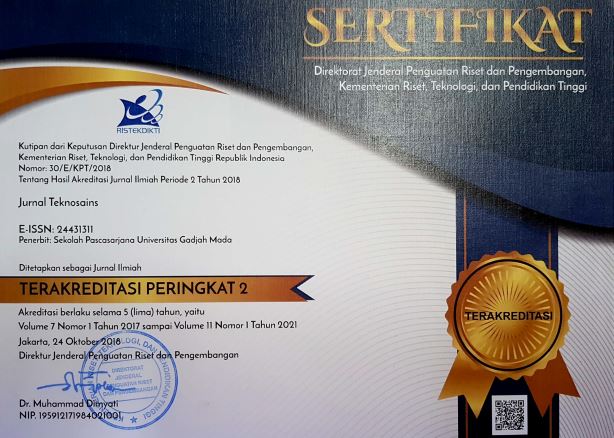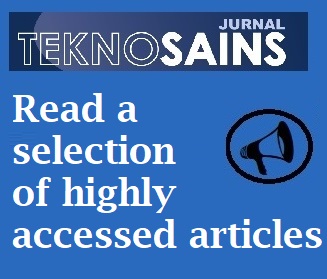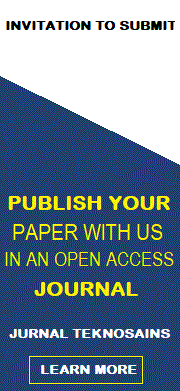ENHANCING CAPACITY OF LOCAL COMMUNITY TOWARDS AGRICULTURAL DROUGHT (CASE IN PLOSO VILLAGE, YOGYAKARTA)
Dina Ruslanjari(1*)
(1) Program Studi Magister Manajemen Bencana, Sekolah Pascasarjana UGM
(*) Corresponding Author
Abstract
This paper reveals the capacity enhancement efforts for local community and assessing their vulnerability level regarding the drought event in Ploso Village of Gunungkidul Regency – Yogyakarta Special Province. The vulnerability assessment was conducted to measure the impact of agricultural drought and also focusing on enhancing the community’s absorbing capacity, buffering capacity and local response capacity. The village drought vulnerability assessment was conducted by using indicator-based calculation towards 50 family-heads of Ploso Village as the assessment samples. Absorbing capacity enhancement was conducted by facilitating and educating local farmers to conduct organic farming as well as increasing their local response capacity by focusing on rainwater harvesting, while buffering capacity enhancement is conducted by empowering the housewives for creating alternate household income The disaster preparedness community is created as the centre of intervention to educate local people about drought disaster and preparing the local teenagers to become future focal points in their area.
Keywords
Full Text:
PDFReferences
Alam, Anwar & Ihsan, Sabir 2012, ‘Role of PRA in Community Development – A Case Study of Barani Area Development Project in Agriculture, Live Stock and Forestry Development in Kohat’, International Journal of Academic Research in Business and Social Science. HR Mars, Vol. 2. No. 8.
Alexander, D. E 2013, ‘Resilience and disaster risk reduction: An etymological journey’, Natural Hazards and Earth System Sciences, 13(11), 2707–2716.
Cavestro, Luigi 2003, ‘PRA – Participatory Rural Appraisal – Concept, Methodologies, and Techniques’, Facolta Di Agraria, Universita Degli Studi Di Padova.
Daramola, A. Y., Oni, O. T., Ogundele, O., & Adesanya, A 2016, ‘Adaptive capacity and coping response strategies to natural disasters: A study in Nigeria’, International Journal of Disaster Risk Reduction, 15, 132–147.
Fatchurohman, H., Cahyadi, A., Nugraha, H., and Wacano, D 2013, ‘Strategi Adaptasi Masyarakat terhadap Bencana Kekeringan di Kawasan Karst Kecamatan Panggang, Kabupaten Gunungkidul, dalam Ekologi Lingkungan Kawasan Karst Indonesia: “Menjaga Asa Kelestarian Kawasan Karst Indonesia”, Editor: Sudarmadji, Haryono, E., Adji, T.N.,Widyastuti, M., Harini, R., Nurjani, E., Cahyadi, A., and Nugraha, H., Yogyakarta: Deepublish, 93-108.
Bordi, I., & Sutera, A 2007, ‘Chapter 1 - Drought Monitoring and Forecas ting at Large Scale’, Methods and Tools for Drought Analysis and Management, 3–27.
Cannon, T., Twigg, J., & Rowell, J 2003, ‘Social Vulnerability , Sustainable Livelihoods and Disasters’. Report to DFID Conflict and Humanitarian Assistance Department (CHAD) and Sustainable Livelihoods Support Office, 1–63. Retrieved from http://www.abuhrc.org/Documents/Social_vulnerability_sust_live.pdf
Chief Regulation of BNPB 2012, ‘General Guidelines for Disaster Risk Assessment Number 2’.
Daniel, H. Schrass, K. & Warner, K. (Eds) 2013, ‘CATALYST Synthesis Report of Best Practices, Networks, Research Gaps, and Recommendations for Fostering Capacity Development for Disaster Risk Reduction and Climate Change Adaptation’. A combined deliverable incorporating D5.1, D5.2, and D5.3. Version 1.0, September 2013, Bonn. Downloadable at http://www.catalyst-project.eu
Flanagan, B.E., Gregory, E.W., Hallisey, E.J., Heitgerd, J.L, and Lewis, B. 2011, ‘A Social Vulnerability Index for Disaster Management’, Journal of Homeland Security and Emergency Management. Vol 8. Article 3.
Hakaloba, J. M., Mumba, J., Dambe, R., & Michelo, C 2016, ‘Examining the integration process of the community based institutions and organizations as a response strategy for “disaster reduction”: A case of the Kazungula District, Zambia’, International Journal of Disaster Risk Reduction, 17, 273–279.
Hagelsteen, M., & Becker, P 2013, ‘Challenging disparities in capacity development for disaster risk reduction’. International Journal of Disaster Risk Reduction, 3(1), 4–13.
Hagelsteen, M., & Burke, J 2016, ‘Practical aspects of capacity development in the context of disaster risk reduction’, International Journal of Disaster Risk Reduction, 16, 43–52.
IFRC 2010, ‘Building Capacity in Disaster Risk Management - Lessons learned in the Democratic People’s Republic of Korea’, Retrieved from http://www.ifrc.org/Global/Publications/disasters/reducing_risks/201300-North-Korea-Case-Study.pdf
Kappes, M. S., Papathoma-Köhle, M., & Keiler, M 2012, ‘Assessing physical vulnerability for multi-hazards using an indicator-based methodology’, Applied Geography, 32(2), 577–590.
N, Lindani., & M.O., Brutsch 2012, ‘Effects of the integrated use of effective micro-organisms, compost and mineral fertilizer on greenhouse-grown tomato’, African Journal of Plant Science, 6(3), 120–124.
National Seminar of Remote Sensing and GIS, University of Muhammadiyah Surakarta 2012, Pemanfaatan teknologi penginderaan jauh (remote sensing) dan sistem informasi geografis (GIS) dalam kajian kebencanaan yang berbasis pengurangan risiko (risk reduction): “Analisis trend kejadian kekeringan di sebagian wilayah Propinsi D.I Yogyakarta dan dampak El-Nino terhadapnya”, Dipayana, G.A., Cahyadi. A, and Nurjani, E., Editor: Priyono, Priyana, Y., Sigit, A.A., Jumadi, Saputra, A., and Andriyani, Surakarta: Muhammadiyah University Press.
Papathoma-Köhle, M., Kappes, M., Keiler, M., & Glade, T 2011, ‘Physical vulnerability assessment for alpine hazards: State of the art and future needs’, Natural Hazards, Vol. 58. 645-680.
Qasim, S., Qasim, M., Shrestha, R. P., Khan, A. N., Tun, K., & Ashraf, M. 2016, ‘Community resilience to flood hazards in Khyber Pukhthunkhwa province of Pakistan’, International Journal of Disaster Risk Reduction, 18, 100–106.
Renaud, F. G 2006. ‘Environmental components of vulnerability. In: Birkmann, J (Ed). Measuring Vulnerability to Natural Hazards: Towards Disaster Resilient Societies’, United Nations University Press. Tokyo. 117-127
Rygel, L., O’Sullivan, David, and Yarnal, Brent 2006, ‘A Method For Constructing A Social Vulnerability Index: An Application to Hurricane Storm Surges In A Developed Country’, Mitigation and Adaptation Strategies for Global Change Journal. Vol.11. 741-764.
Santosa, W, L 2016, “Hidrogeomorfologi Mata Air dan Kearifan Budaya Masyarakat dalam Pengelolaannya sebagai Sumber Air Bersih di Pulau Peling Kabupaten Banggai Kepulauan Provinsi Sulawesi Tengah”, in Pengembangan Wilayah dan Masyarakat berbasis Prinsip Kebhinekaan dan Kearifan Lokal untuk Memperkokoh Kemandirian dan Kedaulatan Bangsa, Editor: Purwitorosari, P, and Wibawa, T.O, Yogyakarta: The Graduate School of Universitas Gadjah Mada, 115-150.
Scott, Z., & Few, r. 2016, ‘Strengthening Capacities for Disaster Risk Management I: Insights from Existing Research and Practice’. International Journal of Disaster Risk Reduction, 1–9.
Sundnes K.O., Birnbaum M.L., O’Rourke A.P, and Daily E.K 2011, ‘Guidelines for Research and Evaluation of Global Health Cluster’, IASC. Geneva.
Sundnes, K.O, and Birnbaum, M.L (eds) 2003, ‘Health Disaster Management Guidelines for Evaluation and Research in The Utstein Style: Volume 1 - Conceptual Framework of Disasters’, Prehospital and Disaster Medicine. Vol. 17/Supplement 3.
UNESCAP 2015, ‘Disasters in Asia and the Pasific: 2015 Year in Review’, Available at www.unesapc/org/our-work/ict-disaster-risk-reduction.
Villagran de Leon, J.C 2006, ‘Vulnerability: A Conceptual and Methodological Review’, SOURCE Publication Series of UNU-EHS, No. 4. United Nations University Institute for Environment and Human Security (UNU-EHS). Bonn. Germany.
Wididana, G., & Higa, T 1994, ‘Effect of EM on the Production of Vegetable Crops in Indonesia’, Proceeding of the 4th International Conference on Kyusei Nature Farming, 2–6.
Westen, C.V., Ed., Alkema, D., N. Kerle, and N.C. Kingma 2011, ‘Multi hazard risk assessment guide book’, Enschede, United Nation University-ITC School on Disaster Geo-information Management (UNU-ITC DGIM). Papathoma
Widdiana, G. N., & Higa, T 199, ‘Effect of EM on the production of vegetable crops in Indonesia’, In 4th Proc. Int. Conference. Kysei Nature Farmingheld in Paris, France (pp. 79-84).
Article Metrics
Refbacks
- There are currently no refbacks.
Copyright (c) 2018 Dina Ruslanjari

This work is licensed under a Creative Commons Attribution-ShareAlike 4.0 International License.
Copyright © 2024 Jurnal Teknosains Submit an Article Tracking Your Submission
Editorial Policies Publishing System Copyright Notice Site Map Journal History Visitor Statistics Abstracting & Indexing









